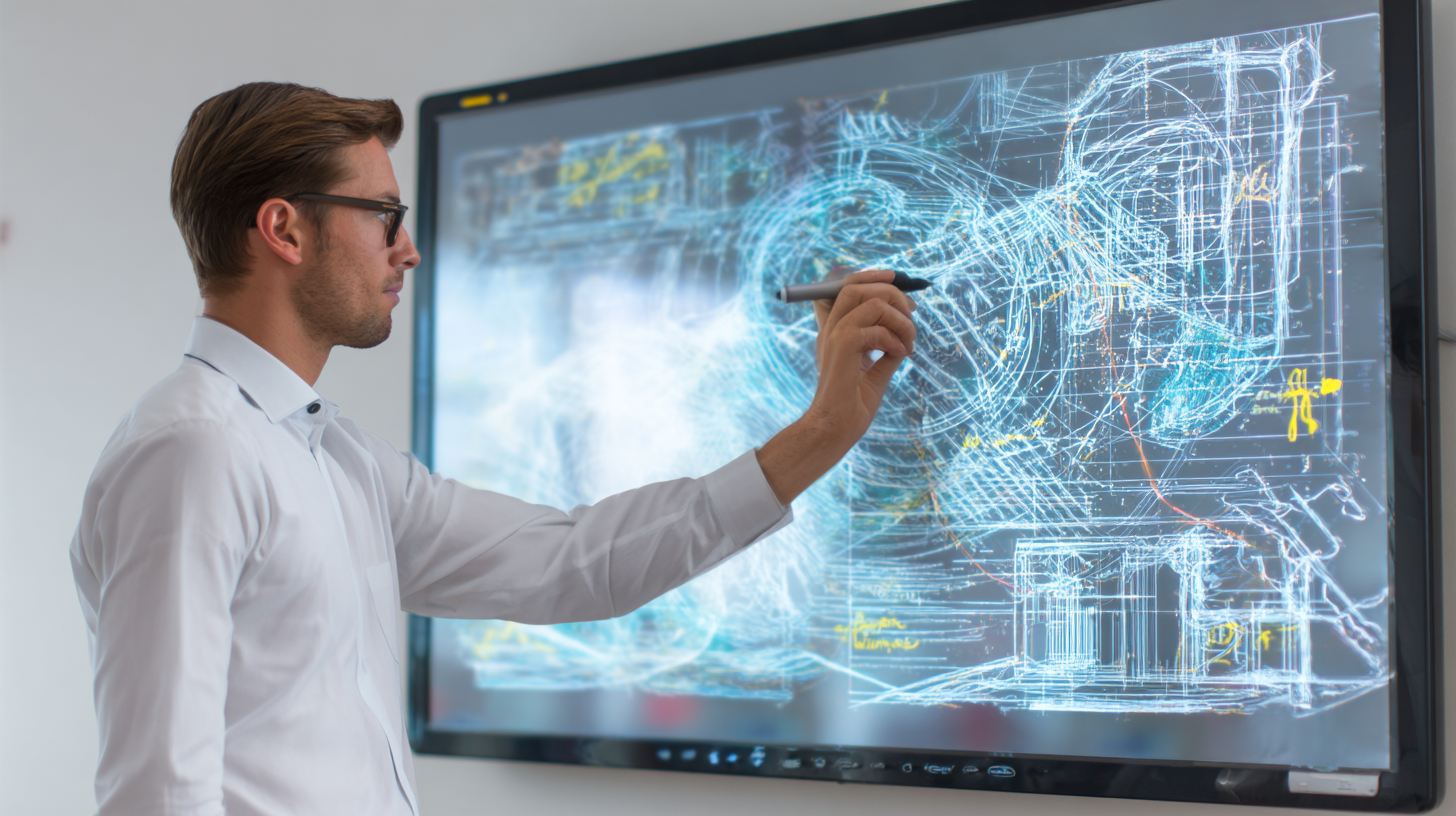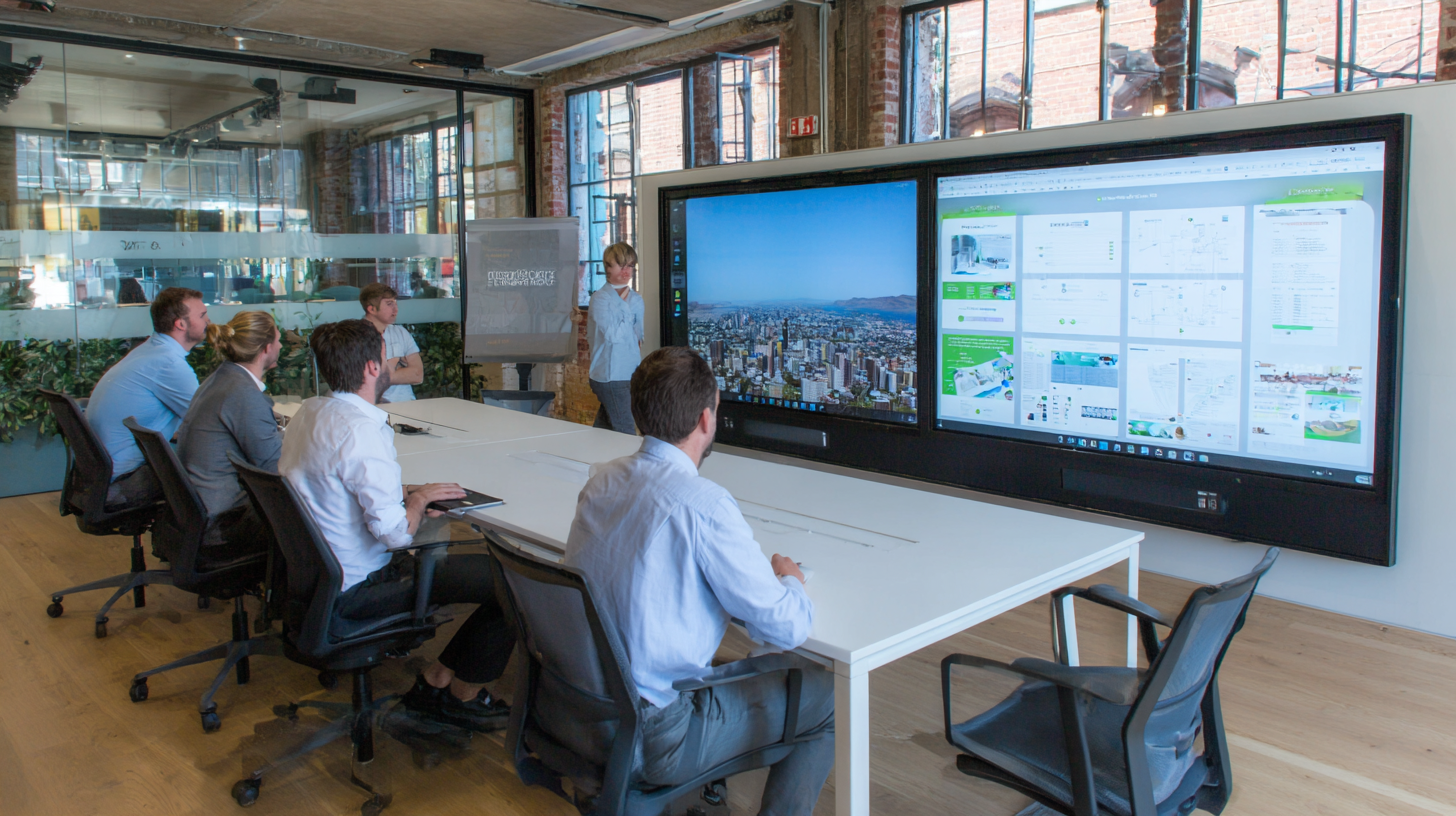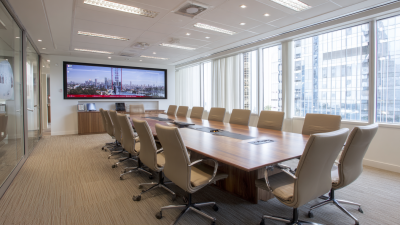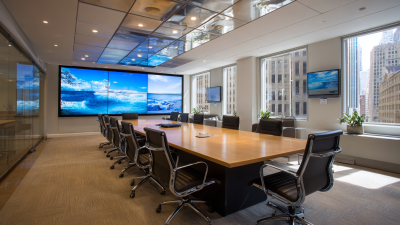Ultimate Guide to Choosing the Right Interactive Flat Panel for Your Business
Table of Contents
- Understanding Interactive Flat Panels: Key Features to Consider
- Evaluating Screen Sizes and Resolutions for Different Business Needs
- Comparing Touch Technologies: Capacitive vs. Resistive Options
- Exploring Connectivity Options: HDMI, USB, and Wireless Solutions
- Assessing Software Compatibility and Integration with Existing Systems
- Budgeting for Your Interactive Flat Panel: Costs Beyond the Initial Purchase
- FAQS
- Conclusion
- Related Posts
In today's rapidly evolving technological landscape, the demand for Interactive Flat Panels is on the rise, fundamentally transforming how businesses engage in communication and collaboration. According to a recent market report by MarketsandMarkets, the global interactive flat panel market is projected to grow from $3.6 billion in 2021 to $7.1 billion by 2026, reflecting a compound annual growth rate (CAGR) of 14.4%. This growth underscores the increasing recognition of interactive displays as essential tools for enhancing productivity and fostering innovative learning environments.

Ledersun Technology Co., Ltd. stands at the forefront of this evolution, providing advanced LCD display technology applications, specifically interactive whiteboards for educational and conference settings, as well as advertising digital signage for commercial areas. Choosing the right Interactive Flat Panel for your business is crucial not just for improving engagement during presentations but also for driving overall operational efficiency. This guide aims to equip you with the knowledge necessary to make an informed decision in this dynamic market.
Understanding Interactive Flat Panels: Key Features to Consider
When selecting an interactive flat panel for your business, understanding the key features is essential for maximizing productivity and engagement. According to a report by Research and Markets, the global interactive display market is projected to grow significantly, with educational and corporate sectors leading this demand. Essential features to consider include screen resolution, touch technology, and connectivity options. A screen resolution of at least 4K is recommended for clarity and effectiveness in presentations, ensuring that every detail is visible even from a distance.
Moreover, touch technology plays a pivotal role in user interaction. Systems utilizing advanced in-cell touch technology provide superior responsiveness and accuracy, enhancing collaborative efforts in meetings or classrooms. Additionally, seamless connectivity options such as HDMI, USB-C, and wireless capabilities are crucial for integrating various devices and platforms. A survey by Statista revealed that 73% of businesses prioritize multiple connectivity options when selecting interactive panels. By carefully evaluating these features, businesses can ensure that they select an interactive flat panel that meets their needs and contributes to an efficient and collaborative work environment.
Evaluating Screen Sizes and Resolutions for Different Business Needs
When selecting the right interactive flat panel for your business, evaluating screen sizes and resolutions is paramount. Different business applications require different visual presentations; for instance, a conference room might benefit from a larger screen to facilitate group discussions, while a smaller meeting space may require a more compact solution. In addition, clarity and detail are critical in presentations, emphasizing the importance of selecting the right resolution to ensure that visuals are crisp and engaging.
Recent market insights indicate that the interactive flat panel industry is on a remarkable growth trajectory, projected to reach $15.9 billion by 2032, reflecting a compound annual growth rate of 8.21%. This growth underscores the increasing demand for advanced displays that can cater to diverse business needs. Companies looking to invest in these technologies should not only consider the size and resolution but also how these factors will support collaborative efforts and improve productivity in different environments. As the market expands, the balance of performance and cost will continue to play a vital role in decision-making.
Comparing Touch Technologies: Capacitive vs. Resistive Options
When selecting an interactive flat panel for your business, understanding the differences between capacitive and resistive touch technologies is essential. Capacitive screens are renowned for their high sensitivity and responsiveness. They detect touch through the electrical charge from the human body, allowing for multi-touch capabilities. This makes them ideal for collaborative environments, where multiple users may interact with the screen simultaneously.
On the other hand, resistive touch technology relies on pressure to register a touch, making it compatible with any input device, including a stylus or gloved hand. This option tends to be more cost-effective and is suitable for industrial applications or environments where durability is crucial. However, resistive screens often lack the same level of clarity and responsiveness that capacitive screens offer.
Tips: Always assess your specific needs before making a choice. If your business requires fast, high-precision interactions and ease of use, opt for capacitive technology. Conversely, if your settings involve heavy use in challenging conditions, a resistive panel may provide better longevity and durability. Test the screens in person to evaluate which technology feels more intuitive and meets your operational demands.

Exploring Connectivity Options: HDMI, USB, and Wireless Solutions
When selecting an interactive flat panel for your business, understanding connectivity options is vital. HDMI (High-Definition Multimedia Interface) is the most common connection type, offering high-definition video and audio transmission with minimal latency. According to a report by MarketsandMarkets, the HDMI market is projected to grow at a CAGR of 9.3% from 2021 to 2026, highlighting its increasing adoption in various sectors, including education and corporate environments. This trend underscores the importance of having a standard HDMI port in your interactive flat panels to ensure compatibility with a wide range of devices.
USB connectivity is another essential feature, allowing for easy file transfers and connection of peripheral devices. The demand for USB-C ports is particularly on the rise, as research from Allied Market Research indicates that the global USB-C market will reach $30.4 billion by 2026, growing at a rate of 25.8% annually. Thus, opting for interactive panels equipped with USB-C capabilities ensures that businesses can leverage high-speed data transfer and power delivery, streamlining workflows and enhancing productivity.
Wireless solutions have also become a significant factor in connectivity choices. A study by Research and Markets predicts that the global wireless presentation systems market will expand at a CAGR of 15.21% from 2021 to 2026, indicating a substantial shift towards wireless presentations in boardrooms and classrooms. Selecting an interactive flat panel that supports wireless connectivity not only aids in maintaining a clean and organized workspace but also ensures seamless collaboration among users, regardless of their device type.
Interactive Flat Panel Connectivity Options
This chart illustrates the popularity of various connectivity options for interactive flat panels used in businesses. HDMI, USB, and Wireless Solutions are compared based on their utilization in corporate environments.
Assessing Software Compatibility and Integration with Existing Systems
When selecting an interactive flat panel for your business, it’s crucial to assess the software compatibility and how well it integrates with your existing systems. The right panel should seamlessly work with your current software tools to enhance productivity without frequent disruptions. Consider initiatives that allow for easy integration with popular operating systems and applications. This ensures that your team can leverage the panel's capabilities without the need for extensive training or adjustments to their workflow.
**Tips:** Always prioritize panels that offer a wide range of software compatibility. Look for those that can easily integrate with cloud-based applications and collaborative tools used by your team. Additionally, check for support and updates from the manufacturer to guarantee ongoing compatibility as your software solutions evolve.
Evaluate the vendor's ecosystem—a strong partnership with software developers can lead to enhancements and upgrades that keep your panel relevant over time. Choosing a product that promotes interoperability not only streamlines operations but also future-proofs your investment, allowing your business to adapt swiftly to changing technology trends.

Budgeting for Your Interactive Flat Panel: Costs Beyond the Initial Purchase
When budgeting for an interactive flat panel, it's essential to consider costs beyond the initial purchase price. Many businesses focus solely on the upfront cost, but there are ongoing expenses that can significantly impact your financial planning. For example, maintenance, software updates, and power consumption should all be accounted for in your budget. Additionally, consider any necessary accessories such as mounts, cables, or sound systems that can add to your overall costs.
Tips: Always seek quotes from multiple suppliers to ensure you’re getting the best deal not only on the panel but also on any required accessories and installation services. Additionally, factor in any training costs if your staff needs education on how to efficiently use the new technology. These expenses can be easily overlooked but are crucial for maximizing your investment.
Another vital aspect is the potential for future upgrades. Technology evolves rapidly, and interactive flat panels may require software updates or hardware enhancements over time. Set aside a portion of your budget for these potential upgrades to ensure your business stays current without facing unexpected financial strain. By being proactive in your budgeting process, you can better manage costs associated with this pivotal business tool.
FAQS
: Key features include screen resolution (at least 4K for clarity), touch technology (advanced in-cell touch for responsiveness), and connectivity options (such as HDMI, USB-C, and wireless capabilities).
A high screen resolution, like 4K, ensures clarity and visibility of details during presentations, making it effective for engaging audiences even from a distance.
Advanced in-cell touch technology is recommended as it provides superior responsiveness and accuracy, enhancing user interaction in meetings or classrooms.
Connectivity options are crucial, as 73% of businesses prioritize multiple options like HDMI and USB-C to integrate various devices and platforms seamlessly.
Businesses should assess their meeting space needs; larger screens are better for conference rooms, while smaller ones suit compact meeting spaces.
The interactive flat panel market is projected to grow significantly, reaching $15.9 billion by 2032, with an annual growth rate of 8.21%.
Companies should consider how screen size and resolution will enhance collaboration and productivity in different environments, as well as the balance between performance and cost.
Clarity and detail are essential for engaging visuals, ensuring that presentations effectively communicate the intended message to the audience.
Conclusion
In the ever-evolving landscape of business technology, selecting the right Interactive Flat Panel is crucial for enhancing collaboration and engagement. This ultimate guide delves into essential features to consider, such as screen sizes and resolutions tailored to your specific needs, as well as a comparison of touch technologies like capacitive and resistive options. Furthermore, we explore various connectivity options—including HDMI, USB, and wireless solutions—to ensure seamless integration into your existing systems.
Moreover, understanding software compatibility is vital for maximizing the potential of your Interactive Flat Panel, especially in educational and conference settings. Ledersun Technology Co., Ltd. specializes in providing tailored solutions, ensuring you not only choose the right panel but also budget for additional costs beyond the initial purchase. Equip your business with the tools necessary for effective communication and successful presentations.
Related Posts
-

Advantages of Using Digital Display Boards for Modern Office Environments
-

How to Transform Your Office Environment with Corporate Digital Signage Systems
-

How to Revolutionize Your Business with Content Management System Digital Signage
-

What Makes the Best Digital Ad Screen Ideal for Global Buyers
-

Digital Interactive Signage Ultimate Guide to Engage and Inspire Your Audience
-

Five Compelling Reasons to Choose Android Digital Advertising Display for Your Business
Blog Tags:





